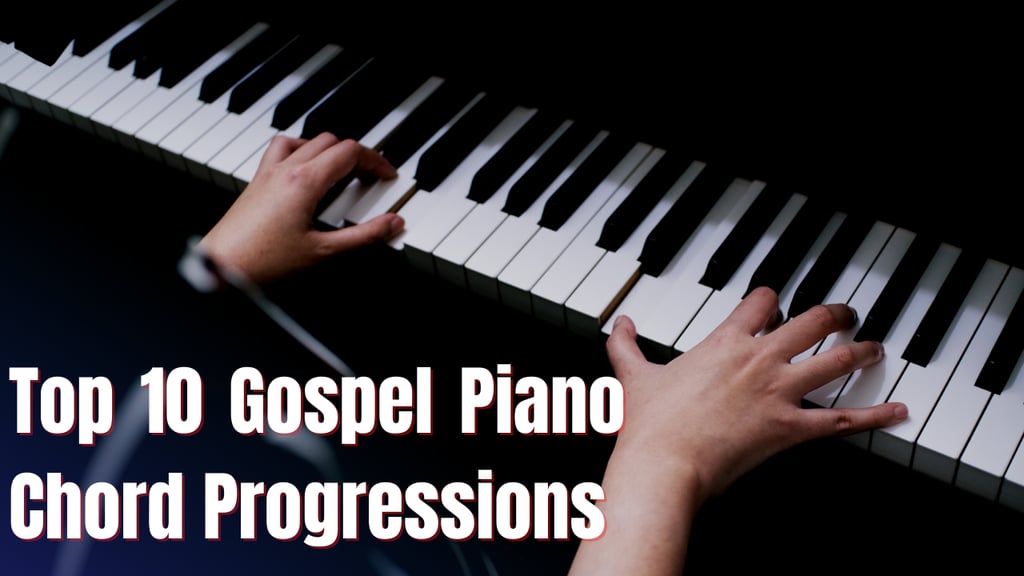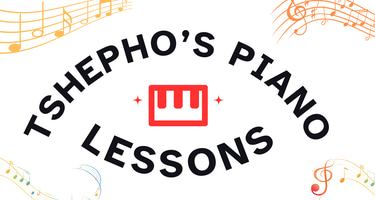Top 10 Gospel Piano Chord Progressions
2/9/20252 min read


Gospel music is known for its uplifting melodies and powerful harmonies. The piano plays a crucial role in creating the foundation for this soulful genre. Here are 10 of the most common and effective Gospel piano chord progressions to help you get started:
The "Amen" Progression (I-vi-IV-V): This classic progression is a cornerstone of Gospel music. It's simple, memorable, and incredibly versatile.
Example: F Major - C Minor - Bb Major - C Major
The "Shout" Progression (I-vi-ii-V): This progression adds a touch of bluesy flavor to your Gospel tunes. The ii chord (Dm in the key of F) creates a sense of tension that resolves beautifully on the V chord.
Example: F Major - C Minor - Dm - C Major
The "Hymn" Progression (I-vi-ii-V-I): This progression adds a touch of grandeur to your Gospel songs, often used in anthems and hymns.
Example: F Major - C Minor - Dm - C Major - F Major
The "Minor Blues" Progression (I-bIII-IV-V): This progression brings a soulful and bluesy feel to your Gospel music. The bIII chord (Ab in the key of F) adds a touch of dissonance that creates a powerful emotional impact.
Example: F Major - Ab Minor - Bb Major - C Major
The "Turnaround" Progression (II-V-I): This progression is a common turnaround used to transition back to the I chord. It creates a sense of anticipation and resolution.
Example: Dm - G7 - C Major
The "Minor II-V-I" Progression (ii-V-I): This progression is a powerful tool for creating a sense of drama and tension in your Gospel music.
Example: Dm - G7 - C Major
The "Circle of Fifths" Progression (I-IV-vii°): This progression moves through the circle of fifths, creating a sense of harmonic motion and resolution.
Example: C Major - F Major - Bb°
The "Hendrix Chord" Progression (I-V-vi-iii): This progression borrows from Jimi Hendrix's bluesy style and adds a unique flavor to Gospel music.
Example: C Major - G7 - Am - Em
The "Modal Interchange" Progression (I-vi-IV-iii): This progression utilizes modal interchange, creating a sense of ambiguity and mystery.
Example: C Major - Am - F Major - Em
The "Gospel Pentatonic" Progression: This progression uses the pentatonic scale to create soulful and expressive melodies. Experiment with different pentatonic scales (major, minor, blues) and combine them with simple chord progressions for unique results.
Tips for Using Gospel Chord Progressions
Experiment with rhythmic variations: Try different rhythms and grooves to add swing and feel to your playing.
Incorporate gospel-inspired techniques: Use techniques like call and response, syncopation, and improvisation to create a dynamic and engaging performance.
Feel the emotion: Gospel music is deeply rooted in emotion. Let your playing reflect the joy, sorrow, and hope that are central to this powerful genre.
These 10 Gospel piano chord progressions are just a starting point. Feel free to experiment with different keys, voicings, and rhythms to discover your own unique voice within this rich and rewarding musical tradition.
